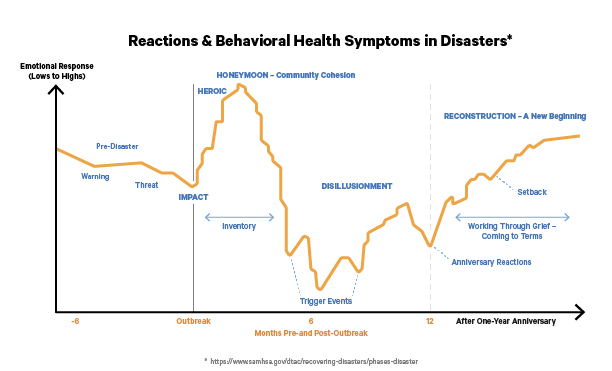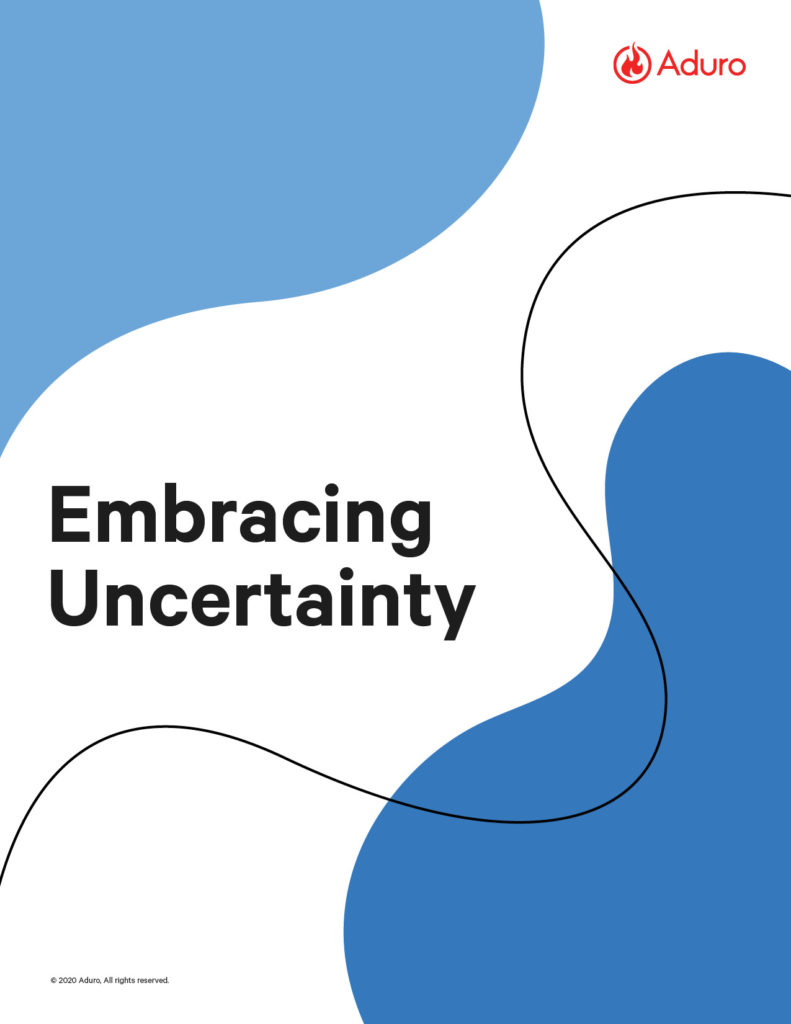2020: The Year of Uncertainty
Most of us have a hard time with uncertainty. In many ways, 2020 is like a bad movie with unresolved plotlines, a constantly shifting cast of antagonists and too many twists. Sitting in the dark, we have stopped caring about the characters and the plot and simply want the show to be over so we can exit the theater, turn on our phones and get back to real life.
Unfortunately, this is not a movie. This is real life. The plot isn’t going to wrap up in any neat way, there are no clear antagonists and protagonists and the twists are not likely to stop. In fact, we probably won’t even know when the plot has run its course. Only in hindsight will we be able to put bookends around the pandemic era. In the meantime, we have to get comfortable with uncertainty.
The good news is that uncertainty is not a new stressor, and we have decades of research at our disposal that illuminates solutions for our current situation. In short, the antidote for anxiety caused by uncertainty is resilience. And companies who wish to overcome crisis fatigue so that performance is not severely impacted must implement well-being solutions that cultivate resilience.
We have to be well to do well.
Crisis Fatigue
In our first article on Human Performance, we highlighted crisis fatigue and the multiple stages that we pass through on our way to recovery. “Generally speaking, the three stages of crisis fatigue may be described as emergency, regression and recovery.” Many companies and individuals are currently stuck in emergency or regression phases and must chart an intentional course to recovery.
Another useful tool to analyze crisis fatigue is the “SAMSHA model.” Adapted from a training manual for mental health in major disasters written by the U.S. Department of Health and Human Services, The SAMSHA model depicts a volatile range of high and low emotions catalyzed by uncertainty. Notably, the lowest point for most is about 6-9 months following a disaster. In other words, we may currently be entering the darkest hour of the pandemic when people suffer most from “disillusionment” and are susceptible to “trigger events” that plunge many into counterproductive behaviors.

The path to recovery (or reconstruction) can take months or longer. But in the face of growing uncertainty, it is important to take control of the journey and pursue recovery with deep intention. Companies and individuals may not be able to control world events, but we can certainly have an impact on how we respond to them. And that’s why an institutional pursuit of resilience is critical now and in the future as events continue to unfold at a seemingly accelerated pace.
Resilience
The importance of resilience may be obvious to most in the current context, but what are we doing about it? If left only to individuals, it is unlikely that organizational resilience will take root at a scale that equips companies to achieve pre-pandemic levels of performance and customer satisfaction. Meanwhile, the more obvious cost is borne by those individuals who are unable to pursue resilience in a meaningful way due to the unprecedented number of stressors they are currently experiencing, from fear of becoming ill to balancing personal and family needs with work needs.
Resilience is defined as an ability to recover from or adjust easily to misfortune or change. Bounce back.”
willistowerswatson.com
Therefore, it is incumbent upon organizations to cultivate a holistic approach to resilience focusing on mental health. To be clear, it’s not enough to send an inspirational company email and suggest useful resources such as meditation apps. Rather, companies must view resilience as the key to recovery and implement a comprehensive change management plan to achieve breakthrough moments with employees, and without leaving anyone behind. Doing so requires a significant coordinated effort on the scale of any other major business initiative. For example, one would not set a goal to transform business operations or enter new markets without aligning the entire company around a vision, creating a strategy and plan, and providing each individual in the company with the people, processes and tools necessary to succeed. Why should cultivating resilience in the face of a once-in-a-century crisis be any different? To be blunt, if your current business strategy is prioritizing “normal” business goals over an organizational approach to well-being and mental health, you’re missing the big picture.
Activating Resilience
Teaching an organization to embrace transformational change has always been important. But in the current context, it has become critical. However, in many ways building organizational resilience follows a similar blueprint to activating any major culture shift such as enhancing innovation, improving product quality or boosting customer satisfaction. Examine these tried-and-true change management steps from Harvard Business School through the lens of cultivating resilience:
- Prepare the Organization – Help employees recognize the need for developing resilience by acknowledging current and future uncertainty while emphasizing the role of stable performance in controlling those things that are within our power.
- Craft a Vision and Plan – Develop a holistic and realistic plan for “becoming resilient” that includes strategic goals, key performance indicators, project stakeholders, and specific actions and initiatives.
- Implement the Changes – Building resilience is not a transaction or an event. Much like any other major business initiative, it requires a long-term commitment to achieving multiple milestones along the way to a successful outcome. Outfit your team with a holistic well-being solution that raises the pursuit of resilience to an equivalent level with other critical business initiatives. One wouldn’t launch a supply chain initiative without an ERP system, right?
- Embed Changes Within Company Cultures and Practices – Once the plan has been implemented — people have been trained, provided with the necessary tools and resources appropriate for their role and processes have been created to ensure continuous reinforcement and improvement — the company must implement controls and rewards to ensure that positive changes stick. Resilience must be sewn into the cultural fabric and defended with the same zeal as any other competitive advantage.
- Review Progress and Analyze Results – Without a doubt, the impact of organizational resilience must be tracked in terms of employee engagement, productivity and customer experience. In uncertain times, it has become acutely clear that employee experience is the keystone of performance and customer satisfaction. And employee well-being, including mental health and resilience, is the foundation of any employee experience initiative. How can people have a great employee experience if they are suffering from crisis fatigue?
Aduro is Here to Help
In times like these, we at Aduro feel an elevated sense of urgency to provide solutions to companies and people in need. Crisis fatigue is real and recovery is essential for the health and prosperity of both individuals and enterprises. But as these crises fade, the focus on a holistic approach to well-being must not fade with it. One defining characteristic of a crisis is our innate human desire and ability to not only rebuild, but to innovate. So we call on businesses and leaders to examine the role of employee well-being in the current environment, but also as a pillar of future innovation, resilience and prosperity. And we humbly offer our support and guidance on the path to crisis fatigue recovery and a more resilient future.

